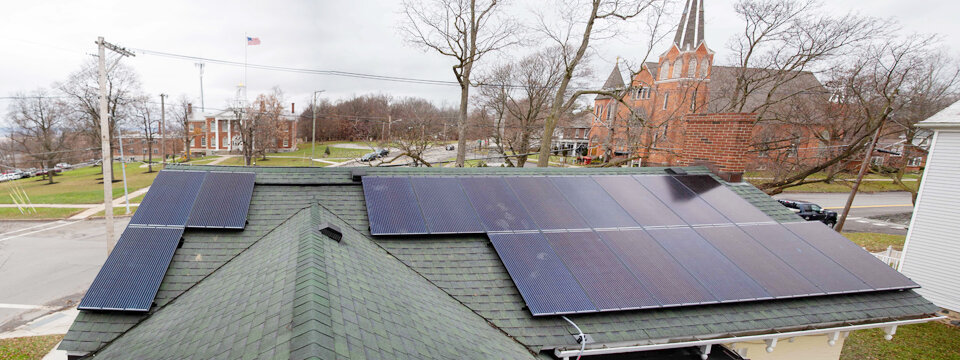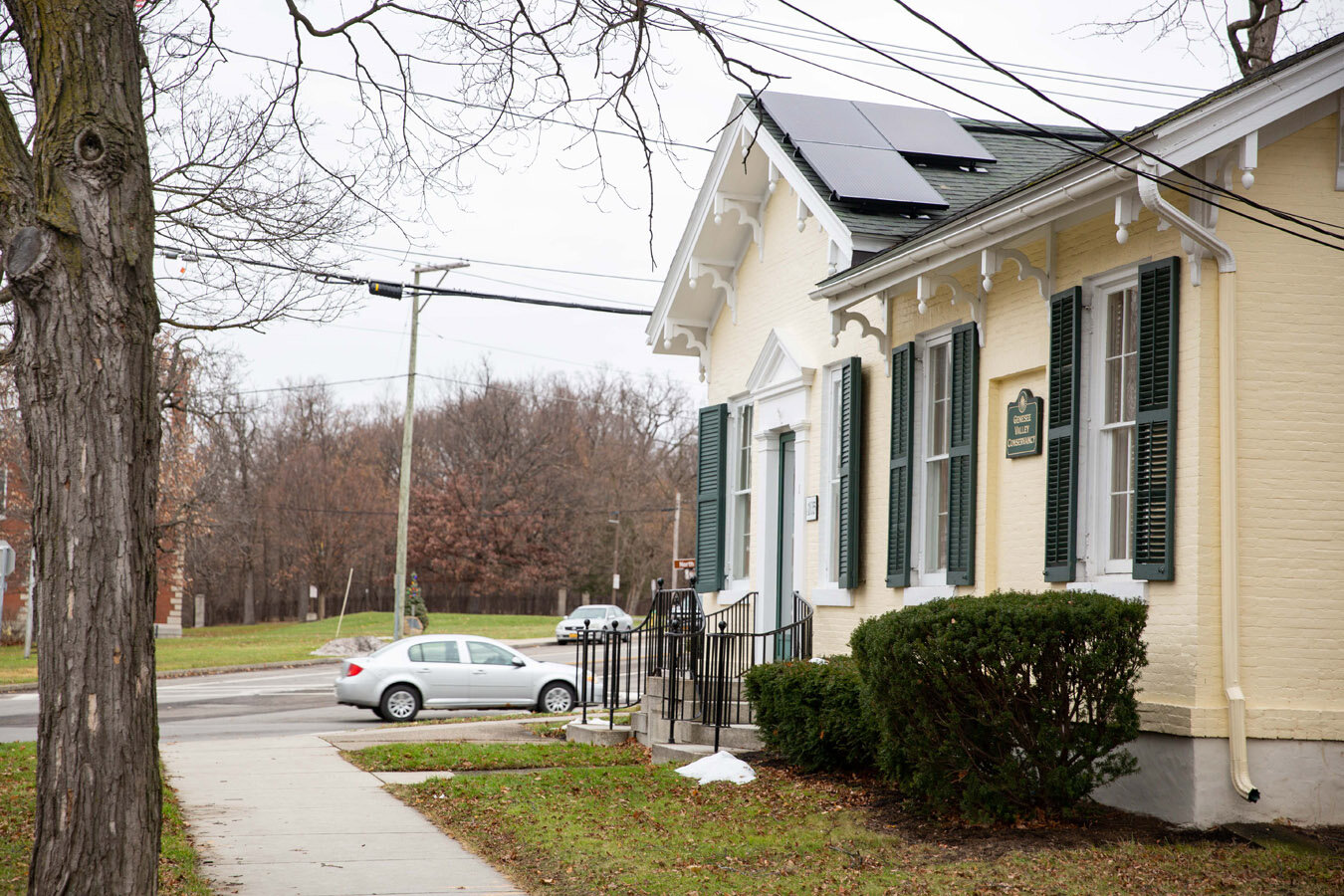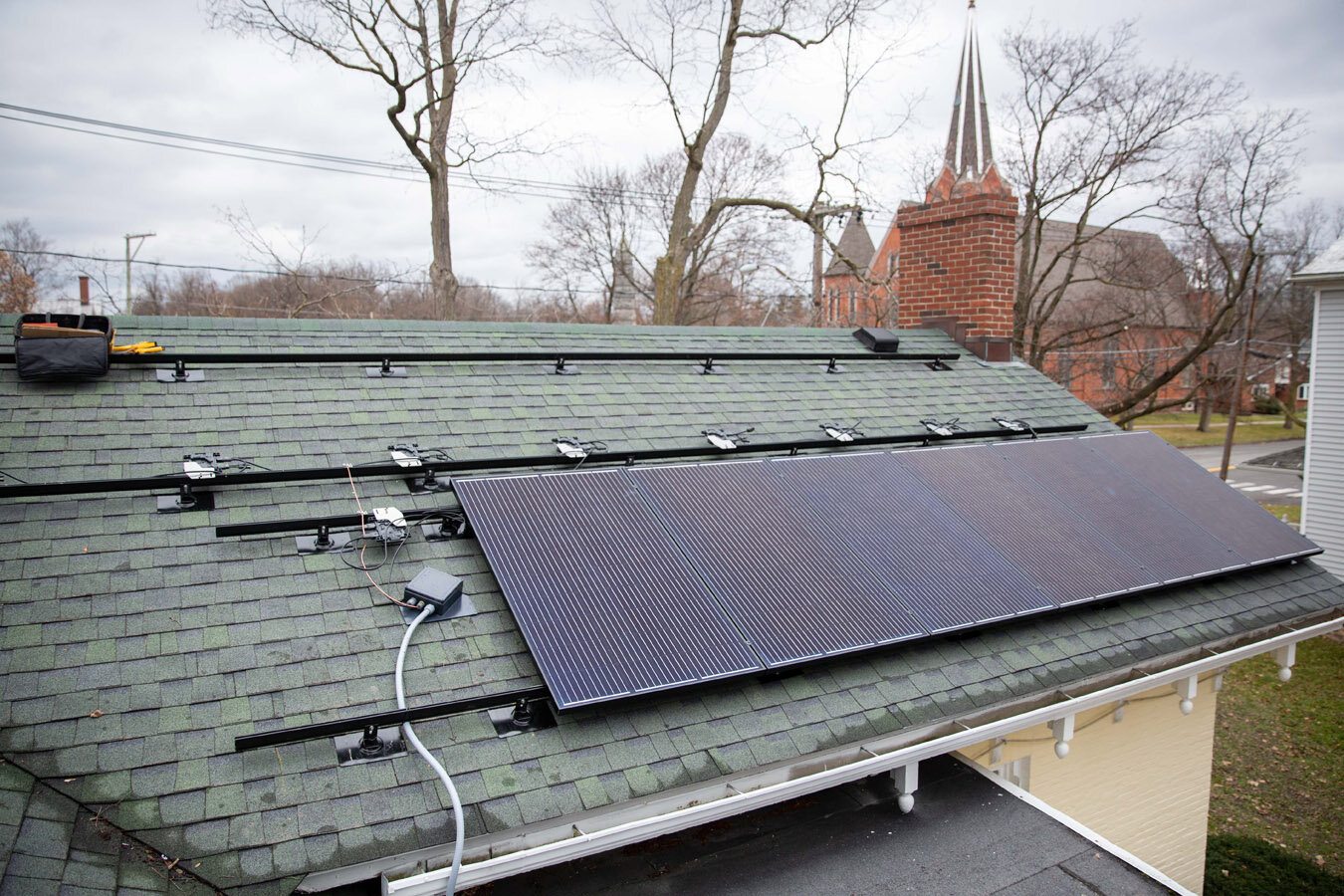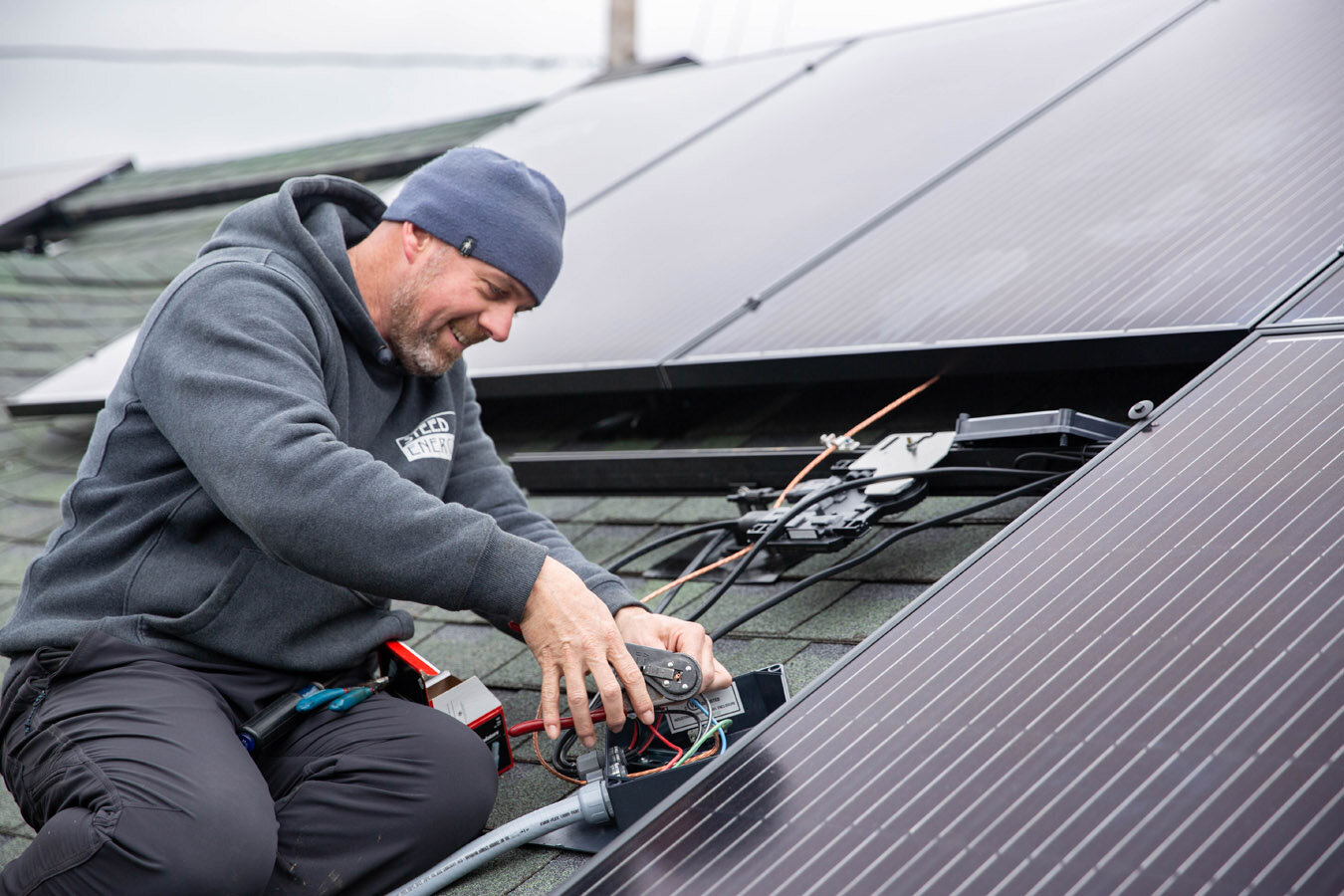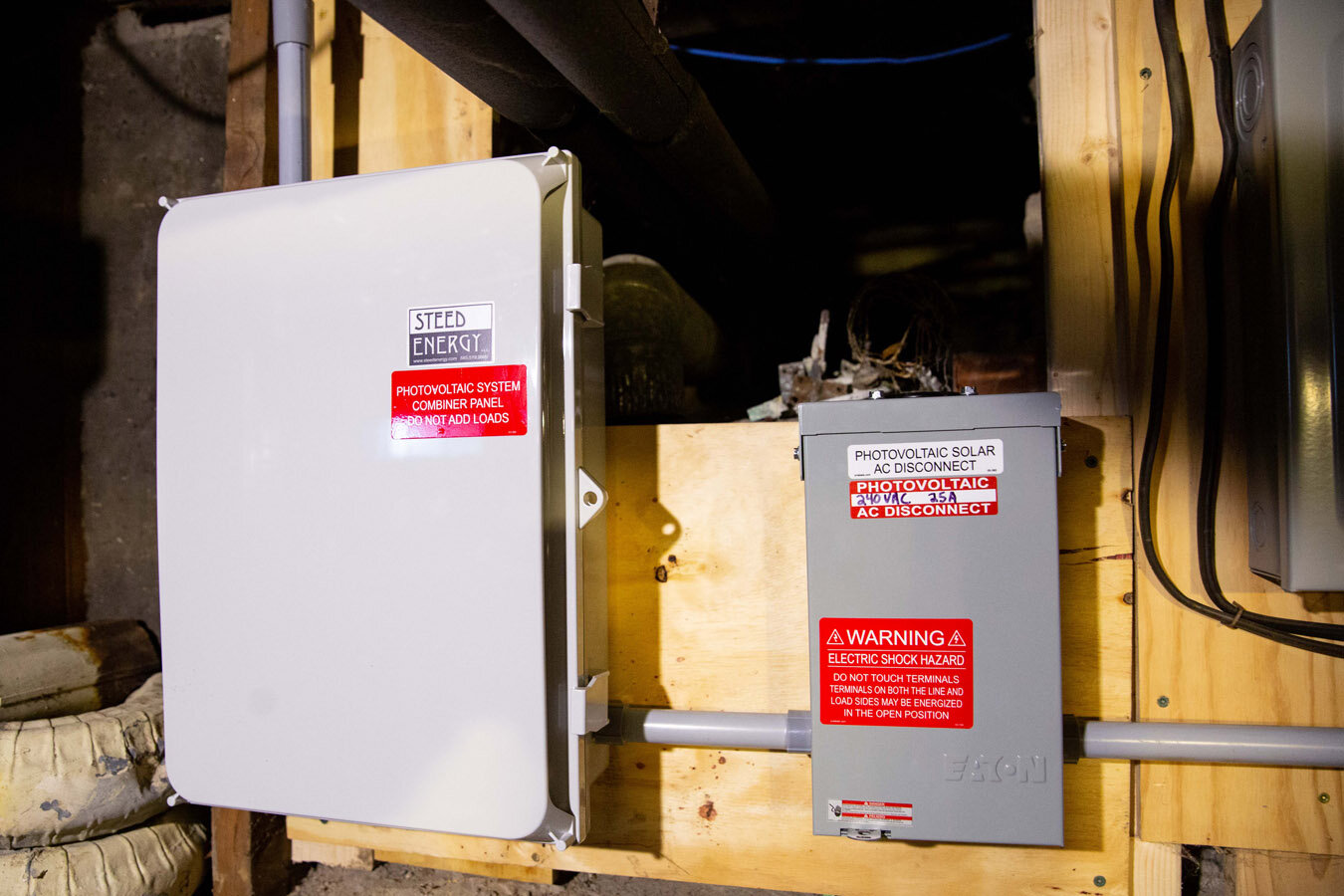Office Goes Solar
Office Upgrades
Historic 1 Main Street, build in 1835, has received its most recent modernization this fall with the addition of solar panels to provide clean electricity.
Building owners Meg and Billy Lloyd partnered with Genesee Valley Conservancy to install the photovoltaic system that will offset 100% of the organization’s electric use. While the organization works to protect habitat, open space, and farmland in the Genesee Valley, a large supply of power is needed to run the operations of this work: computers, printers, lights, modems, etc.
The up-front costs were shared by the building owners and the Conservancy, as both will benefit from the project. The Conservancy will see an immediate reduction in monthly utility bills and after six years will break even on the initial investment and begin seeing a net-savings. Meg and Billy benefit from helping the Conservancy work toward carbon neutrality, by having infrastructure on the building that will continue to benefit tenants for decades, and by making the space more attractive to tenants as it will come with low utility costs.
Over the past several years, various energy efficiency upgrades have been undertaken at 1 Main Street to reduce the needs of the office. Upgrades include adding insulation and storm doors and windows, installing a programmable thermostat, and upgrading to LED lightbulbs.
Since 1835, the building has seen several large renovation projects. The right wing (when facing the front door) was an early addition to the original building which was built to serve as James S. Wadsworth land office. In 1926 a rear addition was added and in 1928 a large front porch spanning the front of the building (not original) was removed and replaced with the current stone steps and railings.
The solar array, located on the south facing roof of the building to maximize its production, will produce 5.5kWp of electricity from the 18 panels and will allow the Conservancy to avoid 4 tons of carbon pollution annually.
The installation process was straightforward and quick. Contractor Glenn Steed of Steed Energy installed the system over the course of two days. The first day involved setting up the racking material on the roof to hold the panels and installing the conduit for running wires from the roof into the basement where the building’s electrical boxes are. On day two the panels were installed and wired together on the roof and the final wiring was completed in the basement to tie the system into the existing panel box.
Each solar panel is equipped with its own inverter, which converts the direct current (DC) electricity produced by the panel into alternating current (AC) electricity which is used in residential and commercial buildings. Because each panel has its own inverter, each panel will operate at maximum efficiency. If shading or a cloud reduces the sunlight hitting one panel, the others will still produce at maximum capacity.
From the roof, electric flows into the basement where a combiner box has been added to combine the two strings of panels together. From there, it flows to a shut off switch which allows for turning the system off should electrical work need to be done on the office. Normally, turning off the power coming from the grid would eliminate any power in the building, but with the solar producing electricity from the building side, both need to be turned off to eliminate electricity flow through the building.
Finally, the power flows into the office circuit breaker box where it is distributed throughout the building for use. If excess power is being produced (like on a weekend when the office is closed) it will flow through a new two-way electric meter into the grid. Electricity flowing into the grid will be credited to the building and when the Conservancy uses the office when the solar panels are not producing (like night meetings or during snow storms) electricity will flow back in from the grid and will use up the credits accumulated by the organization.
As the Conservancy works to protect the important natural areas of the Genesee Valley, productive soils, sensitive habitat, clean water, there is an obligation to ensure we are caring for the climate which will affect all of our conservation work if not addressed. This solar project is one more step towards reducing Genesee Valley Conservancy’s emissions pollution.
While the architecture and technology within the office have changed repeatedly over the years, the use of the building has remained focused on the landscape of the Genesee Valley. As James Wadsworth’s land office, the building served to support his land holdings. Farmers and tenants would come in to negotiate leases and pay rent at the building. Today, the Conservancy uses this office as a base for its land conservation work, protecting some of those same Wadsworth lands in addition to lands across seven counties of the Genesee River watershed.
On the Conservancy’s side, the solar project was funded through a portion of a special bequest gift to the Conservancy that the Board set aside for special projects. Between the carbon pollution reduction and the medium range financial savings that will result, the investment is a win-win for the Conservancy’s conservation efforts and operating budget.
An open house in the spring of 2020 will be held to showcase the system to the public as part of the Conservancy’s 30th anniversary series of events.

